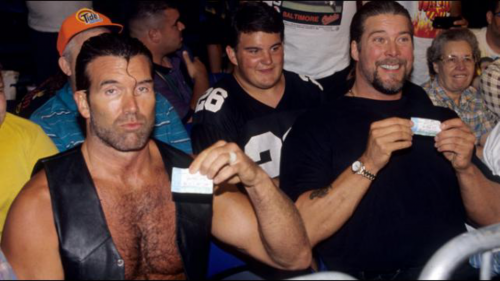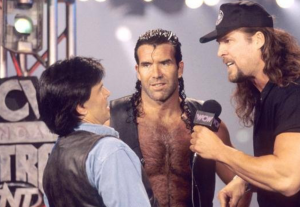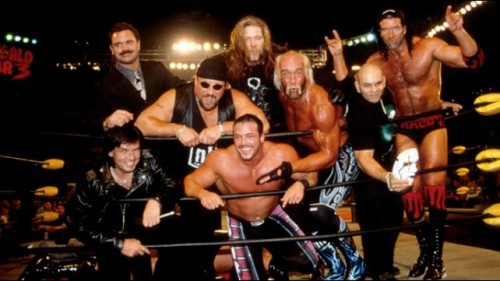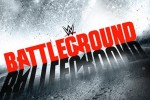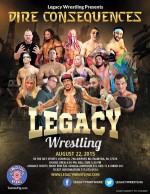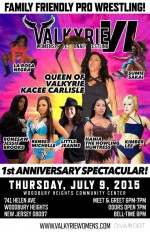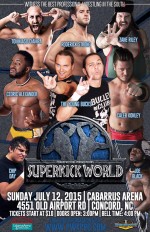(Last week marked nineteen years since the shocking events of Bash At The Beach 1996. This is the third in a series of articles. To read part one, click here . To read part two, click here .)
The appearance of Razor Ramon on WCW programming had wrestling fans buzzing. The following week, when Diesel showed up with Razor to play (“Look at the adjective..”) with the “Big Boys” of WCW, fans were talking even more. Wrestling purists were about to get what they had clamored for for years: The World Wrestling Federation versus World Championship Wrestling.
Or so they thought.
Due to legal reasons, Razor and Diesel were not referred to their well-known, yet copyrighted names. They weren’t called anything other than “Outsiders,” and that was done by design. From the moment that they signed their contracts, WCW President Eric Bischoff knew what he wanted to do with the two established stars, who would go on to use their real names of Scott Hall and Kevin Nash.
Rewind to just a few weeks prior to this. The date was April 29th, 1996. Nearly 70,000 people packed into Tokyo Dome to witness New Japan Pro Wrestling’s “Battle Formation.” One of the 70,000 people on hand that night was Eric Bischoff. The main goal of Battle Formation was to bring the New Japan vs. the invading UWF-I (Union of Wrestling Force-International) rivalry, the biggest money making feud for NJPW at the time, to a close.
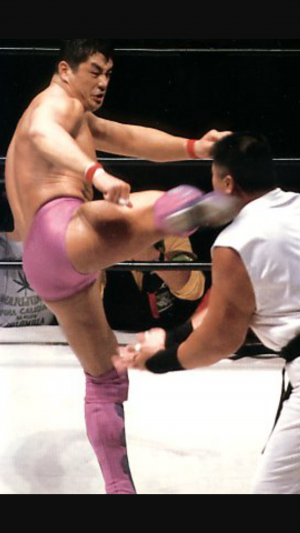 The main event saw NJPW’s Keiji Mutoh vs. UWF-I’s Nobuhiko Takada, who was the reigning NJPW Champion. To bring the story to it’s proper conclusion, Mutoh made Takada submit, thus bringing the championship back to New Japan. Bischoff was intrigued by the idea of a rival organization invasion angle, so much that he wanted to replicate it in WCW. Upon seeing Nash and Hall, Bischoff wanted the television audience and the fans in arenas to assume that the WWF was infiltrating WCW, and it worked. It worked so well that WWF’s legal team quickly tried suing WCW, claiming that the Atlanta based organization was infringing on Titan Sports copyrights.
The main event saw NJPW’s Keiji Mutoh vs. UWF-I’s Nobuhiko Takada, who was the reigning NJPW Champion. To bring the story to it’s proper conclusion, Mutoh made Takada submit, thus bringing the championship back to New Japan. Bischoff was intrigued by the idea of a rival organization invasion angle, so much that he wanted to replicate it in WCW. Upon seeing Nash and Hall, Bischoff wanted the television audience and the fans in arenas to assume that the WWF was infiltrating WCW, and it worked. It worked so well that WWF’s legal team quickly tried suing WCW, claiming that the Atlanta based organization was infringing on Titan Sports copyrights.
At WCW’s Great American Bash 1996 in June, Bischoff conducted a live interview, forcing Nash and Hall to acknowledge their real names, and own up to the fact that they were not employed by the World Wrestling Federation. The damage to the WWF had already been done, however. Despite the fact that Nash and Hall were no longer “WWF Guys,” they were still labeled by fans as “WWF Guys.” With the weekly attacks to WCW wrestlers and staff and the unannounced appearances sitting in the front row and at the announce table on “Nitro,” wrestling fans had already invested themselves emotionally into the idea that Nash and Hall had arrived in WCW, with or without WWF contracts, to prove that the company up north was the superior wrestling organization.
The Outsiders began hinting to a “third man” that was on his way to WCW. He would join them at Bash At The Beach, the company’s next pay per view, on July 7th, 1996, in a six man tag team match against WCW’s Randy Savage, Lex Luger, and Sting. Speculation began to run rapid as to just who that third man would be. Eric Bischoff was unsure of who the third man would inevitably end up being– but he knew it he wanted it to be.
Unsure of his reaction, Bischoff paid a visit to one Hulk Hogan.
Come back later this week for part four. You know you wanna.
 If you like what you read and want to support, share the social medi links at the bottom of this page, and/or purchase a tee from me at my
Pro Wrestling Tees store
. I have a new shirt featuring me with a mustache and a cat that is “must own.”
If you like what you read and want to support, share the social medi links at the bottom of this page, and/or purchase a tee from me at my
Pro Wrestling Tees store
. I have a new shirt featuring me with a mustache and a cat that is “must own.”
-Greg

